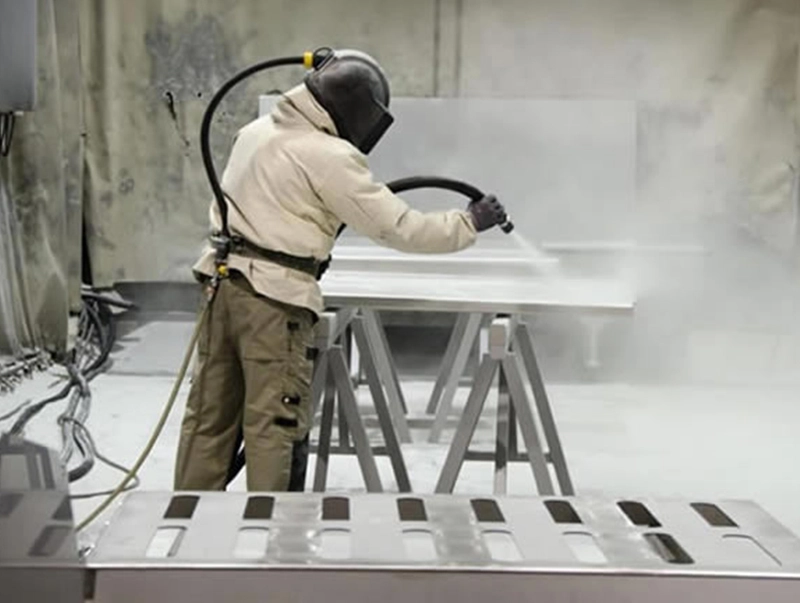In the domain of surface preparation, selecting the right abrasive media is crucial for achieving desired results. One material, in particular, has emerged as a favorite for professionals: silicon carbide. This high-performance media offers remarkable durability, cutting power, and versatility, making it ideal for an array of applications. Whether you’re working on metal, ceramics, or glass, silicon carbide sandblasting media consistently delivers superior outcomes.
What Is Silicon Carbide?
Silicon carbide, often abbreviated as SiC, is a crystalline compound composed of silicon and carbon. This material is renowned for its extraordinary hardness, thermal resistance, and durability. These characteristics render it indispensable in industries that require intense wear resistance and superior toughness. Historically used in ceramics, cutting tools, and semiconductors, silicon carbide has also found a niche in abrasive media, particularly for sandblasting purposes.
Exceptional Hardness and Cutting Power
One of the defining qualities of silicon carbide is its exceptional hardness. It ranks just below diamond on the Mohs scale, giving it unparalleled cutting power. This makes it an outstanding choice for tasks that involve removing stubborn coatings, rust, or oxidation. The sharp, angular particles of silicon carbide allow it to swiftly abrade surfaces, speeding up the sandblasting process compared to other media like aluminum oxide or glass beads. For industries that value efficiency and precision, this material is a game changer.
Applications Across Multiple Industries
Silicon carbide is incredibly versatile, finding its way into numerous industries that rely on sandblasting for surface preparation. In metalworking, it’s used to strip rust and prepare surfaces for painting or coating. Its hard-wearing nature makes it perfect for industrial applications requiring aggressive abrasion.
In the world of glass and ceramics, silicon carbide serves an entirely different purpose. It’s used for etching and frosting glass, creating intricate designs or providing a smooth, matte finish. Its precision is unmatched, allowing artisans to achieve consistent and detailed results. Similarly, in stone working, silicon carbide is trusted for shaping and finishing sculptures and architectural elements.
Durability and Reusability
Unlike some other blasting media that degrade after minimal use, silicon carbide stands out for its remarkable durability. Its molecular structure allows it to retain its sharp edges even after multiple blasting cycles. This longevity reduces the need for frequent media replacement, ultimately lowering costs over time. For companies that conduct large-scale operations, this cost-effectiveness is a crucial advantage.
Moreover, the reusability of silicon carbide media makes it an eco-friendly option. With proper cleaning and maintenance, it can be recycled for multiple passes, reducing waste and environmental impact. In a world that is increasingly leaning towards sustainable practices, choosing a long-lasting, recyclable abrasive like silicon carbide aligns with those goals.
Comparing Silicon Carbide to Other Media
When selecting an abrasive media, comparing the options is vital. While materials like aluminum oxide, steel grit, and glass beads each have their merits, silicon carbide frequently outperforms them in key areas. Aluminum oxide, though popular, lacks the sharpness and hardness of silicon carbide, making it less effective for challenging tasks. Glass beads offer a softer finish but cannot compete with the cutting power of silicon carbide.
Steel grit, while durable, tends to fracture and dull more quickly than silicon carbide, requiring more frequent replacement. This drives up operational costs in the long run. Silicon carbide’s toughness ensures it maintains its sharp cutting edges, providing a consistent and reliable performance cycle after cycle.
Choosing the Right Grit Size
The versatility of silicon carbide extends to its availability in various grit sizes. Choosing the correct grit size is crucial for achieving the desired surface finish. For aggressive material removal, such as heavy rust or thick coatings, coarser grits are ideal. Conversely, finer grits are suited for delicate tasks, such as glass etching or polishing.
Understanding the specific requirements of the project will allow operators to select the perfect silicon carbide grit. Whether preparing a metal surface for industrial coatings or creating an intricate glass design, the flexibility offered by varying grit sizes ensures optimal results.
Conclusion
Silicon carbide sandblasting media has firmly established itself as a leader in abrasive technology. Its unique combination of hardness, cutting power, and durability makes it the preferred choice for industries ranging from automotive to glass manufacturing. By offering superior performance, reusability, and eco-friendly advantages, silicon carbide continues to shape the future of surface preparation. For professionals seeking precision and efficiency, there’s no better option than silicon carbide.
